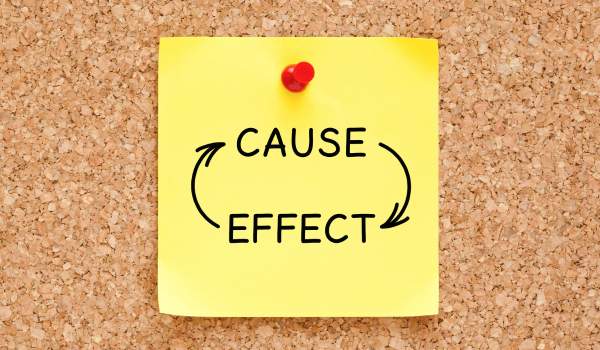You’ve probably heard the name before — chromium.
It’s a metal that shows up naturally in rock and soil. Some forms are safe… but others? Not so much.
The real problem starts when hexavalent chromium — the same stuff made famous by Erin Brockovich — sneaks into drinking water.
And while small amounts can happen naturally, industrial waste and poor groundwater management are often the bigger culprits.
So if you’re wondering how worried you should be (and what to do about it), you’re in the right place.
Let’s break it all down — step by step.
🧠 Quick Takeaways
- ✅ Two Types of Chromium Exist – Chromium-3 is essential to health; Chromium-6 is the harmful one
- ✅ Wells Are More at Risk Than City Water – But both can have contamination
- ✅ Testing Matters – Chromium doesn’t taste, smell, or change the look of water
- ✅ RO and Ion Exchange Filters Work Best – Carbon filters alone usually won’t cut it
- ✅ Certification Counts – Always look for NSF-certified filters if you’re removing metals
🧲 Chromium: The Good, the Bad, and the Rusty

Chromium is a metal that naturally shows up in soil and rock—and eventually, in our water supply. But not all chromium is created equal.
- 🔹 Chromium-3 (Cr³⁺) – Found in food and supplements, this type is considered safe (and even helpful) in small doses.
- 🔹 Chromium-6 (Cr⁶⁺) – This one’s less friendly. It’s often linked to industrial pollution and is the form most people worry about in drinking water.
💧 Common ways it ends up in your water:
- Erosion – Groundwater can absorb chromium from natural mineral deposits.
- Industrial Sites – Metal plating, paints, and factories that cut corners can leak it into soil and aquifers.
- Hazardous Waste – Improper storage or disposal lets it slowly seep into wells and waterways.
👉 If your water source is near industry—or you’re on a private well—it’s worth testing to know what form (and how much) is present.
⚠️ Is Chromium in Your Water a Problem?

The short answer? It can be.
Chromium-6 — the type tied to industrial runoff — has been linked to serious health issues in both animals and people. According to health researchers, long-term exposure may increase the risk for:
- 🫁 Lung irritation and cancer (especially from inhaled particles)
- 🧬 Cell damage that could raise cancer risk
- 🧠 Memory issues and mood changes
- 😷 Skin rashes and irritation
- 👃 Nosebleeds or sinus trouble
- 💥 Stomach ulcers and digestive upset
Even though small amounts of chromium-3 (the “good” type) are safe, your body can convert chromium-6 into total chromium load — which still adds up over time.
👶 *Children, pregnant women, and people with existing health issues may be more sensitive to those effects.
📜 What Do the Rules Say About Chromium?

The EPA sets a legal limit for total chromium in drinking water:
100 parts per billion (ppb). That includes both chromium-3 and chromium-6 combined.
But here’s the catch — most of the concern today is with chromium-6, and that part isn’t regulated separately.
- 🧪 Some states, like California, tried to set a much lower limit just for chromium-6 (10 ppb), but it got overturned due to cost concerns for local water systems. Until that’s sorted, the national rule still treats both types the same.
- 🌍 Meanwhile, other countries and organizations like Health Canada and the World Health Organization stick with similar guidelines — usually between 50–100 ppb for total chromium.
💡 Bottom line:
If your water comes from a public utility, they’re required to test and report total chromium levels. But if you’re on well water, testing is up to you.
🔍 Should You Test for Chromium?

If you’re on city water, you’re in decent hands — utilities must test for total chromium and report it in your Consumer Confidence Report each year. Some even break it down by type.
But if you’re on a private well, there’s no one testing it but you.
💡 Good to Know: Chromium can show up naturally in groundwater, especially near industrial zones or areas with a history of metal processing or mining.
🧪 Best Way to Test Your Water
We recommend using a certified lab test — it’s the most accurate, and you’ll get results you can actually act on.
📦 Tap Score’s Essential Well Water Test is a great choice. It checks for total chromium and dozens of other common contaminants. (read more here)
You can also add on a test specifically for chromium-6, which is what most people are worried about. It’s easy — just send in a water sample with the prepaid kit, and you’ll get results in a few days.
🚿 How to Remove Chromium from Your Water

If your water tests positive for chromium, the right filter makes all the difference. But not all filters can handle it — basic carbon filters usually aren’t enough. Let’s break down the best options:
| 🧪 Filter Type | 🎯 Best For | ⚡ Effectiveness |
|---|---|---|
| Reverse Osmosis | Drinking water only | Removes up to 99% of total and hexavalent chromium |
| Ion Exchange | Whole-house filtration | Removes chromium plus hard minerals (like calcium & magnesium) |
| KDF-55 Media | Combined with carbon in pitchers or whole-house systems | Neutralizes chromium through redox reactions |
| Alkalizing Filters | Raising pH to reduce chromium solubility | More of a support method than direct removal |
💬 Good to Know: Reverse osmosis and ion exchange are still the heavyweights for chromium removal. But if your system includes a quality KDF blend or a pH booster, you’re giving your filter extra muscle — especially if your water is naturally acidic.
🧪 Why Some Carbon Filters Say They Remove Chromium

Not all carbon filters are created equal. Basic carbon alone doesn’t remove chromium — but when it’s blended with other materials like KDF-55 or ion exchange resins, that’s where the magic happens.
| 🛠️ Filter Type | 🔎 How It Works |
|---|---|
| Standard Carbon Filter | Reduces chlorine and odors — not effective for chromium |
| Carbon + KDF-55 Filter | Reduces chromium, heavy metals, and improves chemical reduction |
| Carbon + Ion Exchange Resin | Targets chromium and other dissolved minerals |
💬 Pro Tip: Always check the fine print. If a carbon filter claims chromium removal, it should specifically mention added KDF media or ion exchange — and ideally, carry NSF certification for heavy metal reduction. If it doesn’t? It’s just marketing fluff.
🧼 Final Thoughts
Chromium might be a powerhouse in industry, but it has no place in your drinking water. Whether it sneaks in naturally or through industrial waste, the health risks aren’t worth ignoring.
A simple water test gives you the clarity you need — with the right filtration system, you can take control. From reverse osmosis to hybrid carbon blends, safer, cleaner water is 100% within reach.
Because good water isn’t just clear — it should be clean, safe, and worry-free. 💧
 129 people found this helpful. Was this guide helpful to you?
129 people found this helpful. Was this guide helpful to you? 

